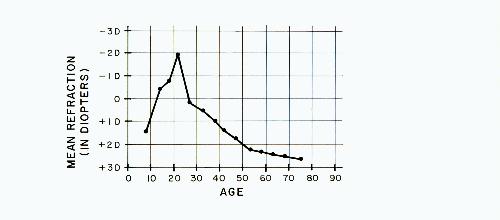uff bolje da ne znaš kakav sam fašist bila u mladim adminskim danimaIzitpajn wrote:Ah, vidim da ti je administriranje ušlo u krv... :headbang:može split ovih optičkih postova?
nažalost nisam bila taj dan na konu. starci mi nisu dozvoljavali da spavam s upaljenim svjetlom, mada sam se bojala mrakaIzitpajn wrote:Što se tiče dioptrije, jesi bila na Koradovom predavanju na Liburniconu? Spomenuo je da ako roditelji puste dijete da spavaju s upaljenim svjetlom, da to onemogućava očima da se odmore pa zbog toga nastaju problemi kao što je kratkovidnost. Sjećaš li se, jesi li se možda bojala mraka kad si bila mala? I ti neki koje znaš da su počeli u vrtiću?
ovo je zanimljiv tekst: http://myopia.org/ebook/11chapter6.htm
jedan kraći ali poučan dio:
THE INCIDENCEOF MYOPIA IN THE ESKIMOS OF BARROW, ALASKA. Let us turn now to another study that was made by Dr. Young and his colleagues. They traveled to Barrow on the northern shore of Alaska, where they examined the vision of the Eskimo families living there. The Eskimo population was a unique group to study in that the older generation was essentially illiterate and had never gone to school, while the younger generation was required to attend school. The older generation lived the typical outdoor Eskimo life with little close work. This then was an opportunity to test the hereditary or genetic theory of myopia. If the hereditary theory was true, then there should be a similar amount of myopia in the children and in the parents in spite of the great difference in the amount of close work done by the two groups. Actually, just the opposite was found.
Of 130 parents, only two showed any myopia. One had -0.25 D and one had -1.5 D. All the rest had refractive errors between 0 and +3 D. In other words they were somewhat farsighted, which can be considered normal.
Regarding the children of these nonmyopic parents, a totally different picture was found. Fully sixty percent of the school children examined showed measurable amounts of myopia. Of the fifty-three individuals who were between twenty-one and twenty-five years old, eighty-eight percent were myopic. There was a beginning of myopia at about age ten, with a steady increase in the proportion of the children showing myopia up to ages twenty-one to twenty-five years. This is shown in graph form in figure 1. It is obvious that these myopic children did not inherit the myopia from their parents.
Fig. 1
Furthermore, since both the parents and the children were still using the basic Eskimo diet, at least for part of the day, these changes cannot be explained in terms of a dietary change.
